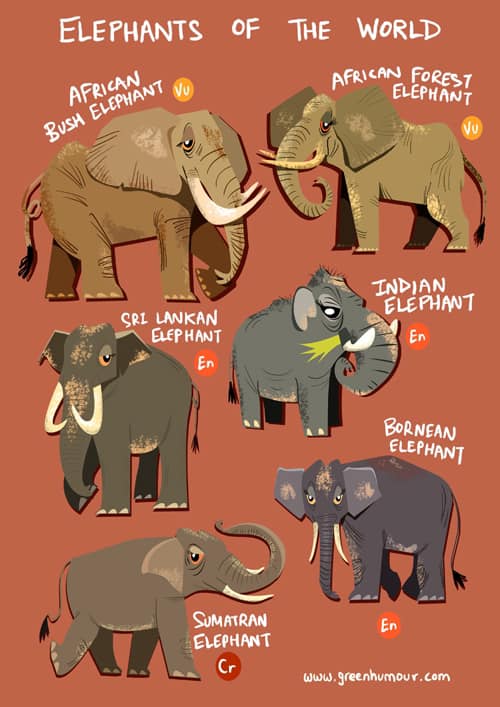
Elephants are the largest mammals alive, and they come in all different shapes and sizes. They’ve been on Earth for millions of years, and human cultures have been interacting with them for just as long — whether it’s finding ways to use their skin, tusks, or bones in daily life or protecting them from poaching. Here’s a little bit about the elephants of each continent:
African Bush Elephant
African Bush Elephant is the largest living terrestrial animal and can weigh up to 7 tons. They are found in sub-Saharan Africa, where they live in groups of around 30 to 40 individuals. African Bush Elephants are herbivores and eat grasses, leaves, twigs, fruit, bark and roots. Their long trunks have hundreds of muscles that allow them to grab food or water from trees or streams if necessary. In addition to their enormous size (they stand about 5 meters tall), these elephants also have tusks which can grow up to 5 meters long!
African Forest Elephant
African forest elephants are the smallest of the African elephants. They live in the dense forests of central and west Africa, where they prefer to eat fruit, leaves and bark rather than grasses like other species. African forest elephants have smaller ears and a longer, straighter tusk than their savannah counterparts–but what sets them apart from other groups is their aggression: these guys can be downright nasty! They’re also smarter than most other types of elephant; one study found that their brains are 40% larger than those of their cousins who live on open plains or grasslands (like Savannah).
Sri Lankan Elephant
The Sri Lankan elephant (Elephas maximus maximus) is an Asian elephant subspecies that lives in Sri Lanka. It is smaller than African elephants, but has a more hairy coat and darker skin tone. The average height of this species is between 9 and 10 feet (2.7-3 m), with females being slightly shorter than males. The average weight for these animals is about 5,500 lbs (2,500 kg).
Indian Elephant
The Indian elephant is the largest land animal in Asia, and it’s found in India, Nepal and Sri Lanka. The species has been threatened by habitat loss and poaching for many years–and while these elephants are known for their ability to adapt to their changing environment, they can still struggle when they’re pushed into an unfamiliar territory. Indian elephants have a high tolerance for heat (they enjoy wallowing in mud baths), but they can get sunburned if exposed too long without shade or water.
Sumatran Elephant
The Sumatran elephant is smaller than its other Asian cousins, with smaller ears and lighter skin. They’re found in the forests of Sumatra, Indonesia, where they have a smaller home range than other elephants. They eat mostly fruit and are believed to be good swimmers because they have been seen swimming across rivers in search of food or mates.
Bornean Elephant
Bornean elephants are smaller than African elephants. They have smaller ears and tusks, as well as a longer trunk that can be used to drink water or pick up leaves. They live in the tropical rainforests of Borneo, where they eat mostly plants, but sometimes they will eat meat if it is available.
Elephants are the largest mammals alive, and they come in all different shapes and sizes. These gentle giants have an enormous range of characteristics that help them survive in their natural habitats. Their tusks can be used for digging up roots or fighting off predators; their trunk is an incredible tool with which they can smell water from miles away; and their ears serve as sunshades when it’s hot out (or even fans!). We hope you enjoyed learning about the different kinds of elephants. If you want to learn more about them, check out our other articles on this website or go see one in person! You never know what kind of elephant will surprise you next.
